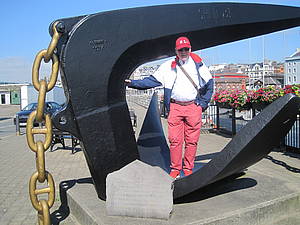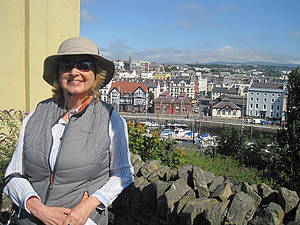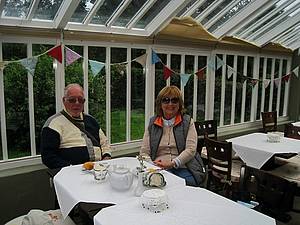Isle of Man 2017
A TRIP TO ISLE OF MAN OR ELLAN VANNIN
Isle of Man, in Manx-Gaelic Ellan Vannin or Mannin, is one of the British Isles, located in the Irish Sea off the northwest coast of England. The Isle of Man is not a part of the United Kingdom or European Union, but it is a possession of the British Crown (dependency) since 1828. It is self-governing in its internal affairs under the supervision of the British Home Office. The capital of the Isle of Man is Douglas.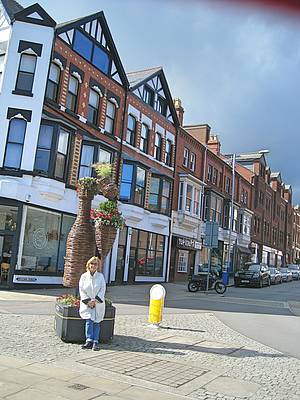
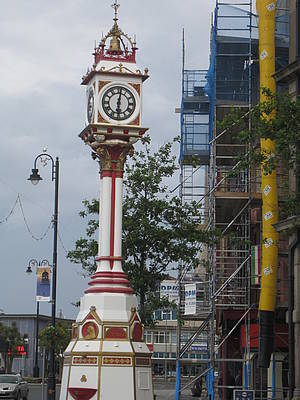
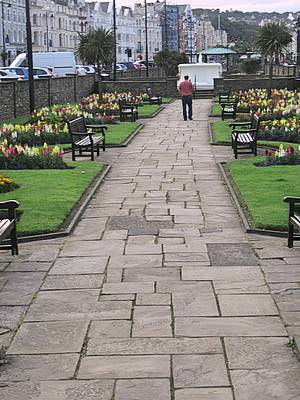
History
The Isle of Man has been inhabited by humans since the Mesolithic Period. It became home of many Irish missionaries in the centuries following the teaching of St. Patrick (5th century). Among its earliest inhabitants were Celts and their language Manx, developed from the old Irish, closely related to Gaelic, remained the everyday language of the people until the first half of the 19th century. In spite of the efforts of Manx renaissance the number of Manx speakers is now negligible, however, the geographic signs on the island are still written in English and Manx.
Norse (Viking) invasions of the Isle of Man began about 800 and the isle was a dependency of Norway until 1266. During this period Man came under a Scandinavian system of government that has remained practically unchanged ever since.
In 1266 the king of Norway sold his suzerainty over Man to Scotland, and the island came under the control of England in 1341. The term suzerainty generally refers to any relationship in which one region or people controls foreign policy and international relations of a tributary state, while allowing the tributary nation to have internal autonomy. Suzerainty differs from true sovereignty, as the tributary state is only technically independent whilst it enjoys self-rule (though usually limited in practice). Although the situation has existed in a number of historical empires (Ottoman empire), it is difficult to reconcile with concepts of international law in 20th or 21st century, in which sovereignty either exists or does not.
From 1341 on, the island’s successive feudal lords, who styled themselves “Kings of Mann,” were all English. In 1406 the English crown granted the island to Sir John Stanley, and his family ruled it almost uninterruptedly until 1736 (The Stanleys refused to be called “kings” and instead adopted the title “Lord of Mann,” which still holds, the current holder of the title Lord of Mann is the Queen Elisabeth II). A more settled epoch in Manx history started with the accession of the Stanleys to the throne. Of the thirteen members of the family who ruled the isle, some were more prominent than the others. Sir John Stanley II went to the island twice to suppress rebellions, but he also introduced trial by jury instead of trial by battle and ordered the laws of the island to be put in writing (1414–1432). James Stanley the 7th Earl of Derby (1627-1651) who was beheaded as a leading Royalist during the English Civil War and his wife born Charlotte de la Tremoille who became famous for her courageous defense of their family seat Lathom House in the absence of her husband belong to the most striking figures in the history of the Isle of Man.
The Lordship of Man was passed to the Dukes of Atholl in 1736, but, in the decades that followed, the island became a major centre for contraband trade, thus depriving the British government of valuable customs revenues. In response, the British Parliament purchased sovereignty over the island in 1765 and acquired the Atholl family’s remaining prerogatives on the island in 1828.
System of Government. The government consists of an elected president; a Legislative Council, or upper house; and a popularly elected House of Keys, or lower house. The two houses function as separate legislative bodies but come together to form what is known as the Tynwald Court. It was setup by the Vikings in 979 AD and is the world´s oldest continuous parliament. Although today’s parliament has modern offices in the capital, Douglas, each July it meets at Tynwald Hill, an ancient Viking site near St John’s, to declare each law that has been passed in the past year. Any Manx citizen can also make a petition which, providing it meets certain criteria, will then have to be considered. The Isle of Man levies its own taxes and issues its own banknotes and coins.
There are around 85 000 inhabitants permanently living on the island. The Manx flag and also coat of arms are based on triskelion, 3 legs conjoined at the thigh. The Manx triskelion is of an uncertain origin and some say that it is related to the triskelion of Sicily. The coat of arms bears a Latin motto Quocunque jeceris stabit, which means "whithersoever you throw it, it will stand."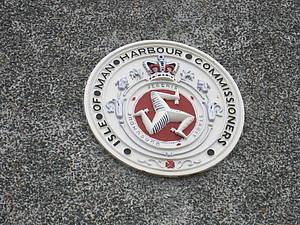

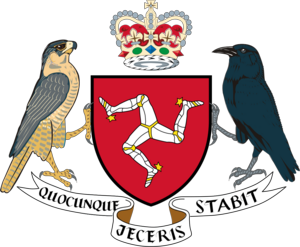
Our experiences
We reached the capital of the Isle of Man Douglas by Steam Packet Company ferry, which is the world´s oldest passenger shipping company – the trip from Liverpool docks to Douglas took 2 hours 45 minutes. As usual, my main worry was not that the ship could get stranded or sink but that I could get sea sick. However, both ways, the sea was calm and it was a very pleasant cruise. 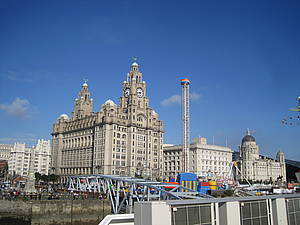
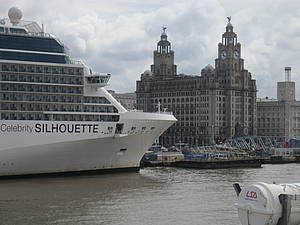
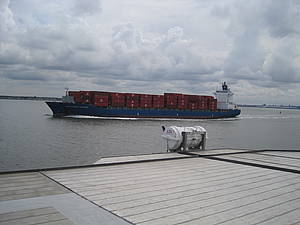
We wanted to stay in the hotel named Ellan Vannin. I liked the Manx name as well as the photos presented on their web page. However, after arrival it showed that it was not such a good idea. The room allocated to us was situated on 3rd floor, without lift, with no sea view, and the reception and restaurant looked at the first glance tatty, so that it certainly would not fulfill requirements for a comfortable holiday. Fortunately, one hundred meters from Ellan Vannin, there was a hotel Claremont, which was much nicer and had a free room, so we just needed to cancel the first reservation and take our suitcase and roll it over to Claremont. 
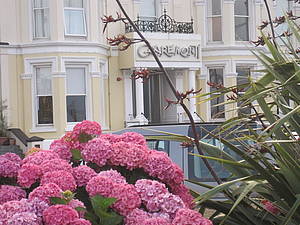
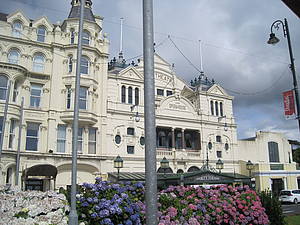
Our first impression of the island was a feeling of a spa resort. The wide bay with a promenade was full of blossoming bushes and flowers which made it very colourful. Also the road around the coast was full of blossoming plants, fuchsias and lilies, on the slopes of the mountains there was fern and heather. 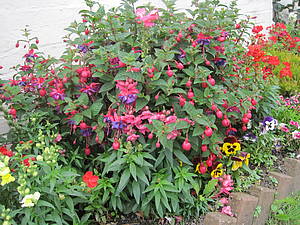
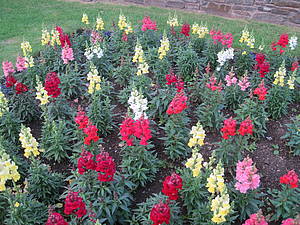
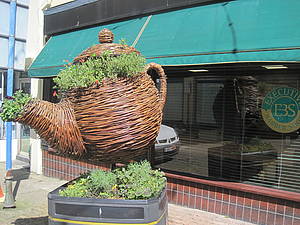
Local farmers are taking care of every available piece of land and produce oats, wheat, barley, turnips and potatoes, the cattle and sheep graze on the pastures. The Manx Loaghtan (pronunciation “louten”) is a rare breed of sheep native only to the Isle of Man. The sheep have dark brown wool and usually four or occasionally six horns. A meeting with such an animal was a weird experience.
Native fauna is of little interest, but the domestic Manx cat, a distinctive tailless breed, is traditionally believed to have originated on the island and is considered one of the symbols of the Isle, the same as the above mentioned Manx Loaghtan sheep. In the northwest of island there are presently living more than 100 wallabies, small kangaroos which normally live only in warmer climates of Australia and Tasmania. Some of them escaped from the island only zoo (Curraghs Wildlife Park) in the seventies, and since then they seem to be prospering.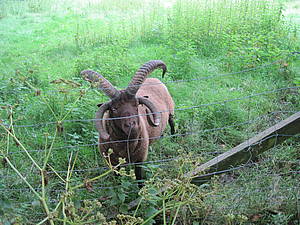
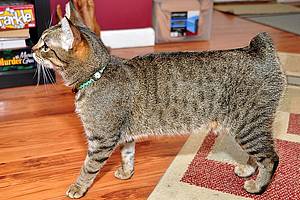
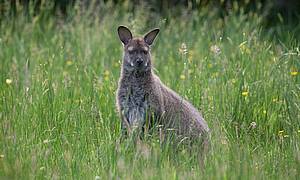
In the past, agriculture, fishing and smuggling were the only basis of local economy, however, times have changed. The isle lives on offshore financial services, high-technologies and tourism, mainly from Britain. The main attraction besides the nature is the variety of historical transport means: horse-driven trams, steam railway, mountain railway and electric railway. But they have well-equipped high tech new buses, many of them Mercedes as well.
On the first day, we decided to go by steam railway to Port Erin on the south western coast of the Isle. It was Saturday afternoon and everybody was merry. People were bringing glasses of beer out of the hotel on the beach, sitting on the benches, enjoying music by a rock band and sunshine.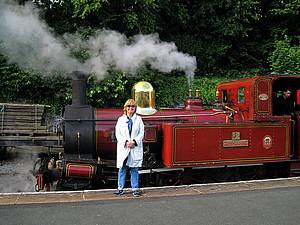
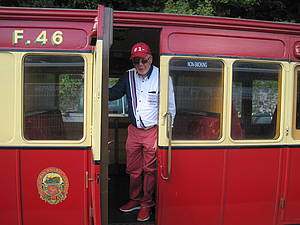
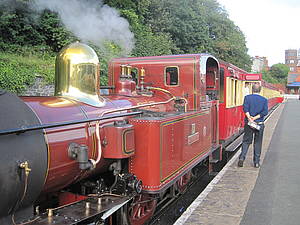
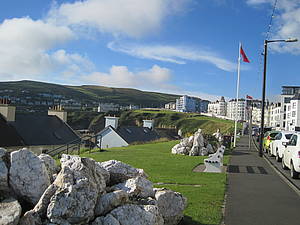
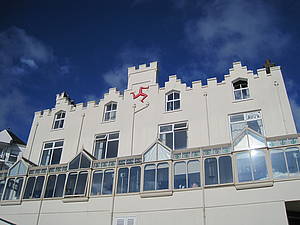
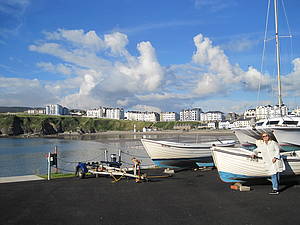
We started the next day with a ride by a horse-drawn tram from our hotel to the electric railway station. The horse tramway was established in 1876 as an achievement of Victorian engineers, meaning last year it celebrated its 140th anniversary of uninterrupted service! 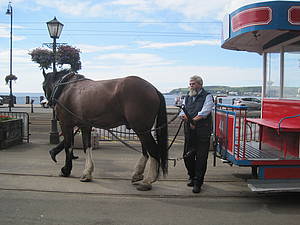
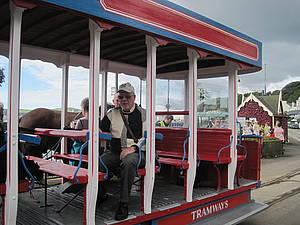
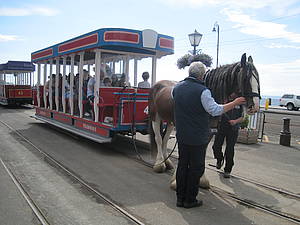
The electric train took us to the town of Laxey on the eastern coast. From there a mountain railway was going up to the top of the highest Manx mountain Snaefell. On the way we passed Laxey Wheel (Lady Isabella), a large red waterwheel built into the hillside, 22 meters in diameter, which revolves at approximately three rotations per minute. The mountain Snaefell is high 621 metres. From the summit it is possible to see seven kingdoms: the Isle of Man, England, Scotland, Wales, Ireland along with the Kingdom of Heaven and Kingdom of Neptune.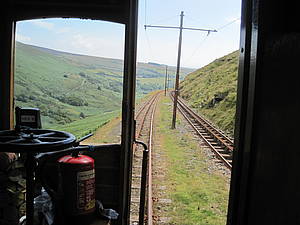
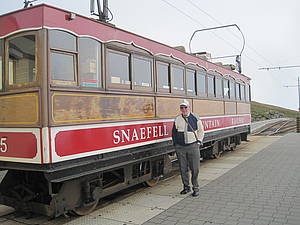
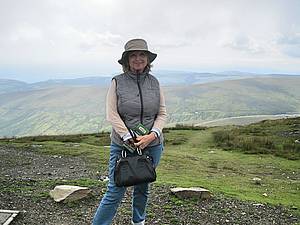
Besides the water wheel we could also see parts of the roads used for International Isle of Man Tourist Trophy (TT) races. The first race was held in 1907 and was organized without interruption with the exception of the period of both world wars. Snaefell Mountain Course is still considered as one of the most dangerous motorsport events in the world, with 260 fatalities over the years. From this reason and for inadequate start money given to the motor bikers, it has been boycotted from the early 1970s by many of the leading competitors and motorcycle manufacturers. We met two typical motor bikers (stout and tattooed) on the ferry to Douglas and had a chat with them (it was the first time when I ever talked to somebody with this hobby, but I have to say that they were nice people - I gladly shared my overdimensional pizza with them). 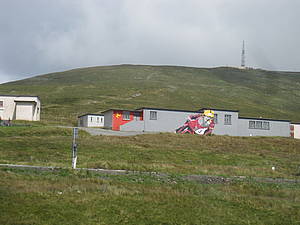
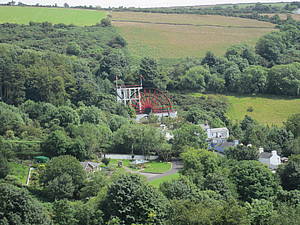
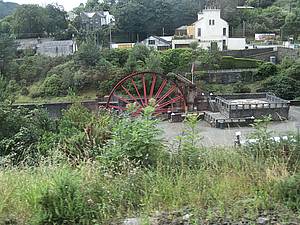
Later on we continued by the electric railway from Laxey to Ramsey. The coastline is rocky and has a fine cliff scenery. We spent some time in the Museum of Victorian Life at the outskirts of Ramsey Grove. The house was built by Mr. Gibbs, a shipping merchant, and the last members of the family, two unmarried sisters, were living in the house till their death in 1970s. We admired Victorian furniture and fashion, bee hives and farm equipment, a game of croquet on the lawns, and enjoyed a High tea with scones in the conservatory tea room. 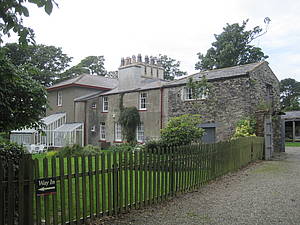
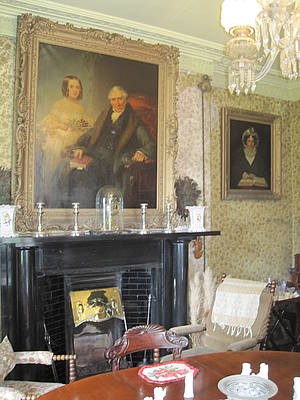
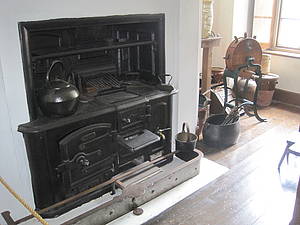
On the way to the embankments we could see a big number of smaller and bigger sailing boats and motorboats, sitting in the mud and waiting for a high tide. That was really a typical picture in all coastal towns, the number of boats and ships on the isle is enormous. 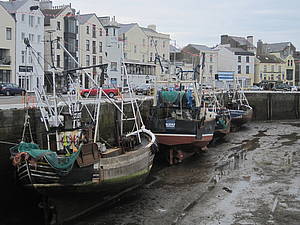
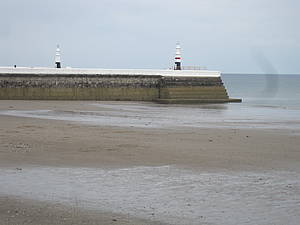
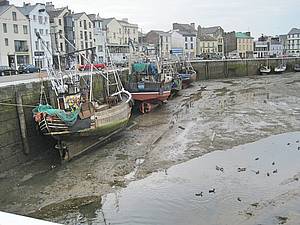
In front of the town hall there is a statue Two Kings of Man sculpted by local artist Amanda Barton which was commissioned in 2000 to mark the passing into the new millennium. It depicts two Norse Kings of Mann and the Isles, the Viking warrior Godred Crovan and his son, great statesman King Olaf. Godred Crovan was also known as King Orry, an almost legendary character revered by the Manx as their greatest king. He seized the throne in 1079 and created the Kingdom of Man and the Isles stretching from the Irish Sea to the Outer Hebrides. King Olaf was an entirely different type than his father. He reigned for 40 years which was mostly a period of unbroken peace, achieved by his wise and political conduct and by his reputation as a man of peace and law. The two Kings represent on the one hand violence and war, and on the other side, peace and prosperity. The concept also reflects the fact that the millennium project was a bridge joining the 20th Century to the 21st Century. There is a number of contrasts between the two Kings - Warrior and Statesman, Father and Son, Adventurer and Settled Scholar, Pagan and Christian, Bearded Norse and Clean Shaven (English influence). They were entirely different in their lives and style of rule yet united as father and son.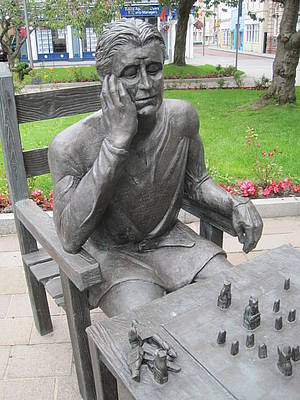
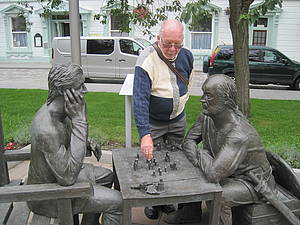

Having a glass of dry sherry in a local pub was also an interesting experience – a typical English pub was packed with guests (it was Sunday), many of them marines, who were drinking heavily (the British and Manx people can do it very well), but they did not seem to be missing their cigarettes – those who still wanted to have a smoke (during our stay 3 or 4 of them) were standing in front of the door and did not seem to mind either. The ban of smoking in closed premises on the Isle of Man is similar to one introduced in England at the beginning of 2008, but England allowed some exceptions for the closed premises, e.g. in prisons. However, the Parliament of the Isle issued an addendum even against such cases and by that they declared to have the first in Europe fully smoke free prison!
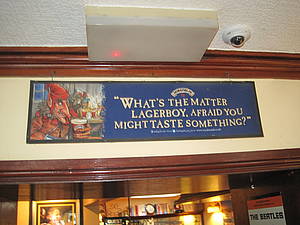
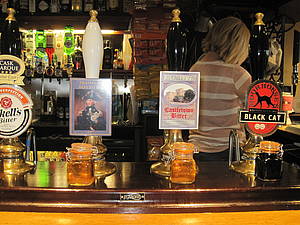
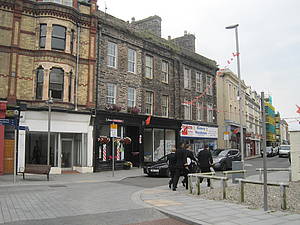
The day after we made a long tour to find a pavilion with camera obscura. Unlike other structures, which were built for astronomical purposes, the Isle of Man’s camera obscura was built in 1892 purely as an attraction for the flourishing Manx tourist industry. The masterpiece works by using a series of mirrors and lenses which are located around the roof line above a darkened room and enable a stunning view at the town. However, when we finally managed to climb the hill, there was no flag on the pavilion meaning it was closed. But we were rewarded by a beautiful view from the hill on the town and seaside anyway.
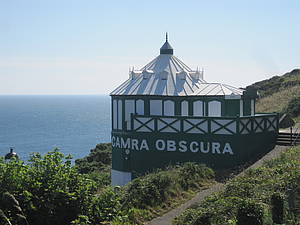
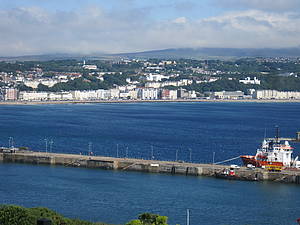
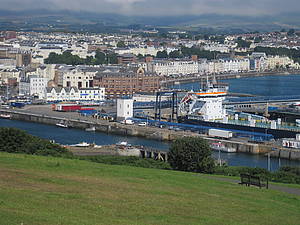
Interesting topics about which we have learnt during our stay:
1) Isle of Man has very low levels of light pollution which gives the island dazzling night skies. The Milky Way, the Great Andromeda galaxy and, occasionally, the Northern Lights can be seen with the naked eye.
2) A festival of literature, Manx Litfest, is taking place regularly at the end of September.
3) Many superstitions and strange customs have been kept on the island because of its isolation.
Two examples:
Hop-tu-Naa is a Celtic festival celebrated on 31st October. Predating Halloween, it is the celebration of the original New Year's Eve (Oie Houney). It is thought to be the oldest unbroken tradition in the Isle of Man. Instead of pumpkins, children carry lanterns carved from turnips, go from house to house and sing traditional Hop tu Naa songs.
On the New Year´s Day, the first person who enters a house in the morning is called qualtagh. It is a custom to place before him or her the best food the family can afford. It was considered fortunate if the qualtagh were a person (a man being preferred to a woman) of dark complexion, as meeting a person of light complexion at this time, especially if his or her hair was red, would be thought very unlucky. It is curious that the superstition in Scotland is the exact reverse of this, i.e. to meet a light complexioned person was fortunate. If the qualtagh were splay-footed, it would be considered very unfortunate. It was important, too, that the qualtagh on New Year's Day should bring some gift, as if he or she came empty-handed, misfortunes would be sure to ensue. To meet a cat first on this day was considered unlucky. It was also important to sweep the floor of the house on New Year's morning from the door towards the hearth, so that the dust should go towards the hearth, otherwise the good fortune of the family would be swept out from the house for that year.
4) Examples of the Manx language in proverbs. I tried to look for some exceptional or typical proverbs but most of them seem to be very similar to those which exist in English or Czech, like “As poor as a church mouse”, “Between two stools is a fall”, “Praise the fine day in the evening” etc.). But maybe the following two are a little bit exceptional and it will also give you a feel of Manx language:
“Never marry an heiress, unless her father has been hanged.” (surely she will be proud, which was supposed not to be good for marriage  )
)
"Ny poose eirey-innen ny slooid ny tan ayr eck er ne croghit."
“Learning is fine clothes for the rich man, and riches for the poor man.” (true)
"Ta ynsagh coamrey stoamey yn dooinney berchagh; as t'eh berchys y dooinney boght."
5) Fairy Tales – we have bought a book of Manx Fairy Tales with beautiful illustrations by Sophia Morrison, originally published in 1911.
From the Preface: “There is at least one spot in the world where Fairies are still believed in, and where, if you look in the right places they may still be found, and that is the little island from which these stories come – Ellan Vannin, the Isle of Mann. But I have used a word which should not be mentioned here – as they are never called Fairies by the Manx, but Themselves, or the Little People, or the Little Fellows, or the Little Ones…”
Sophia Morrison is right, the Manx fairy tales are really unique, the same as the island which has many unique features. 